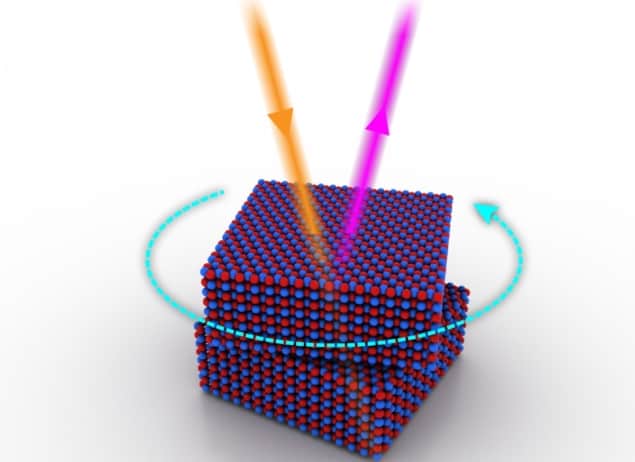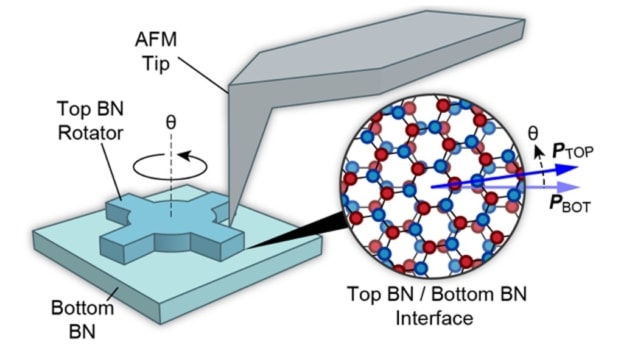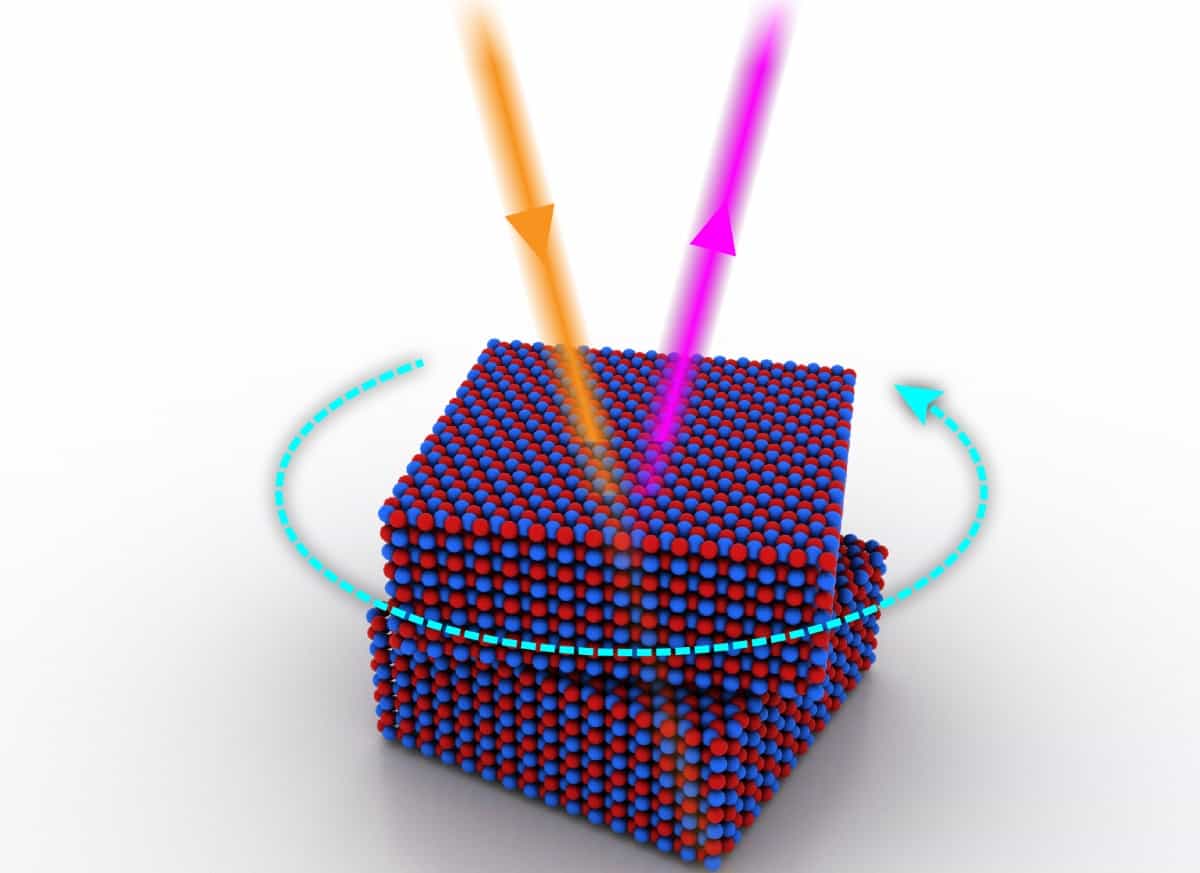
Researchers in the US have shown that 2D materials can be used to create tunable optical second-harmonic generation. They achieved this by rotating layers of hexagonal boron nitride relative to each other, creating an efficient and controllable optical response. This could have advantages in a range of laser-based applications, the researchers say, and could provide a compact way of generating entangled photons for quantum information processing and computing.
Optical frequency conversion is a nonlinear process where materials are used to generate light at different colours, or frequencies, to that inputted. This can be exploited to generate light at frequencies for which there is no convenient laser source and is used for many applications, such as quantum photonics, super-resolution imaging and optical sensing. Second-harmonic generation is a common type of frequency conversion in which two input photons are combined to produce one photon with twice the energy.
The ubiquitous green laser pointers, for example, use second-harmonic generation to frequency double infrared lasers to green. This is simpler and cheaper than producing a green laser. But like most nonlinear optical processes, it relies on crystals. The rigid structure of crystals makes controlling the output signal and changing any aspect of it difficult because you can’t easily adjust their optical properties. “If you wanted to make [a green laser pointer] a different shade of green, for example, that would be really hard,” explains James Schuck, a mechanical engineer at Columbia University.
As well as adjusting the output frequency of a second-harmonic generation response, you might also want to modulate it, to make it brighter or dimmer. You can do this by adjusting the laser source, but it would be preferable to have a constant source and adjust the nonlinear response of the material itself. The output can also be modulated by applying a voltage to the crystal or hitting it with an ultrafast laser pulse.
However, Shuck and his colleagues wondered whether better tunable second-harmonic generation could be achieved using methods developed for “twistronics”, a technique in which two layers of 2D materials are twisted, or rotated, relative to each other. This rotation changes the electronic properties of the materials, with researchers being particularly interested in its effect on superconductivity and insulation. “It wasn’t a big leap for us to say well you probably change the optical properties too,” Shuck says.
In work described in Science Advances, the researchers rotated layers of hexagonal boron nitride to achieve highly tunable second-harmonic generation. They found that this technique enabled them to modulate the output intensity of a second-harmonic generation that was 10 times larger than achievable using electric pulses or lasers applied to optical crystals. This high tunability also persisted over a broad band of frequencies in the visible spectrum.
To rotate two layers of boron nitride relative to each other, the researchers etched the top layer into cog-like shapes, or micro-rotators. They then used an atomic force microscope (AFM) to push on and shift this top layer. This allowed them to dynamically tune the symmetry of the layers, adjusting the optical response.

The researchers have named this technique “twistoptics”. The concept works with many other 2D materials, Shuck says. However, boron nitride is particularly good as it can produce a second-harmonic generation response over a wide range of input frequencies.
Shuck tells Physics World that twistoptics could be used to generate entangled photons for applications in quantum optics and quantum information. This process is essentially a reverse of second-harmonic generation. A high-energy photon is sent into the material and splits into two photons. And these photons are quantum entangled.
There are crystals available that can perform this down-conversion and produce entangled photons, but they are quite large. By stacking multiple layers of 2D material you could produce many twisted interfaces to create a very efficient nonlinear optical response in a very thin material, Shuck says. And as well as reducing the physical size of the material, this would provide more control over the output frequencies and intensities.
“We are trying really hard to see if we can create entangled photons,” Shuck tells Physics World.
